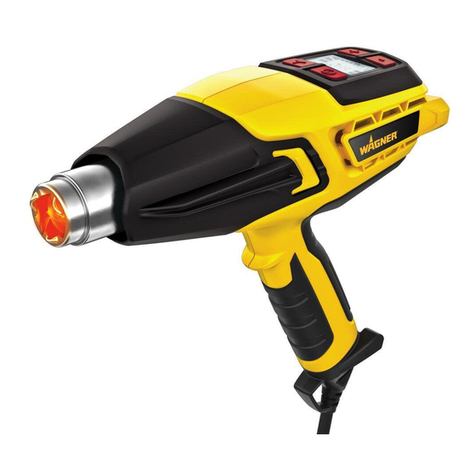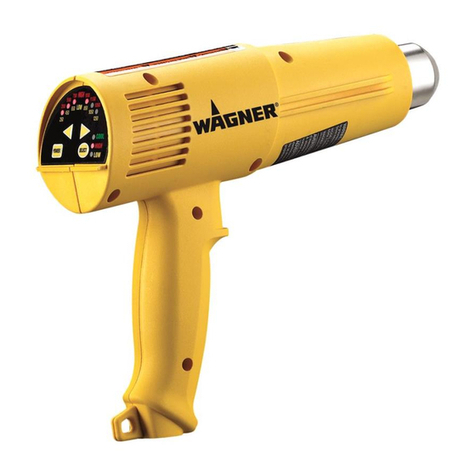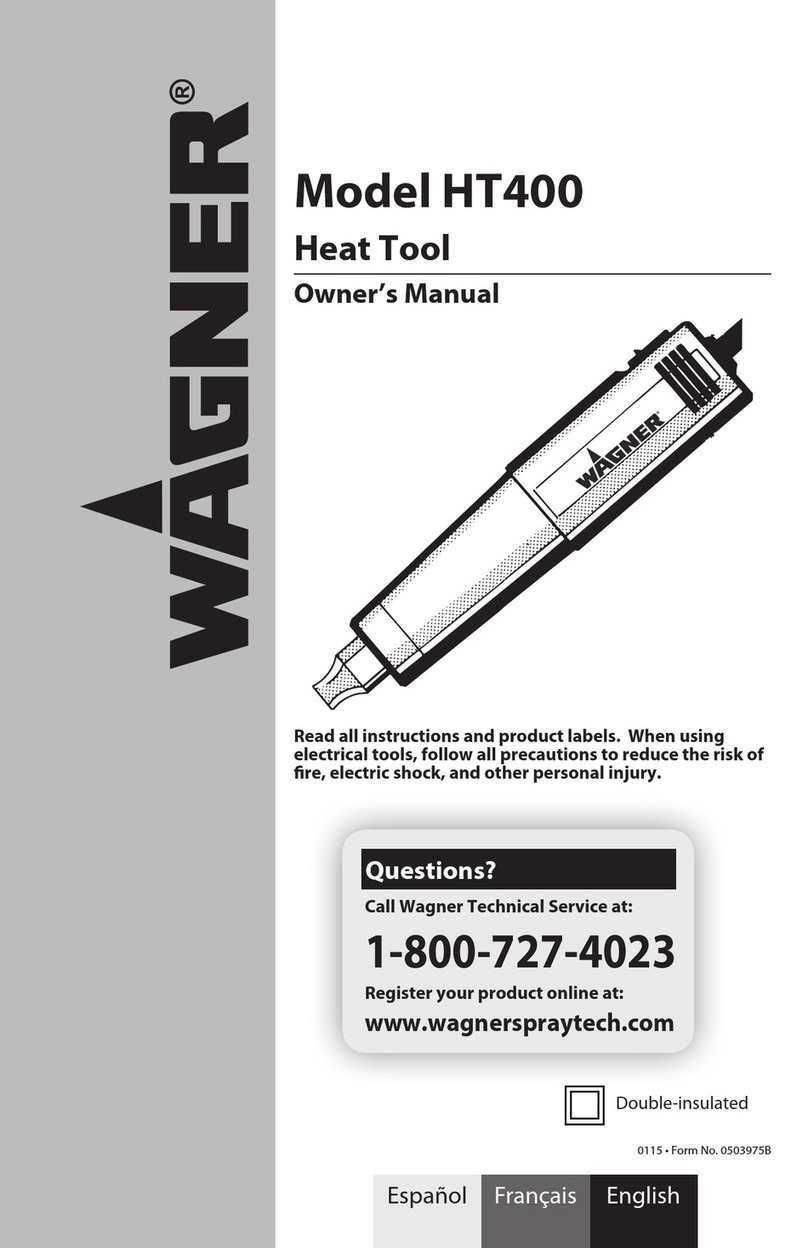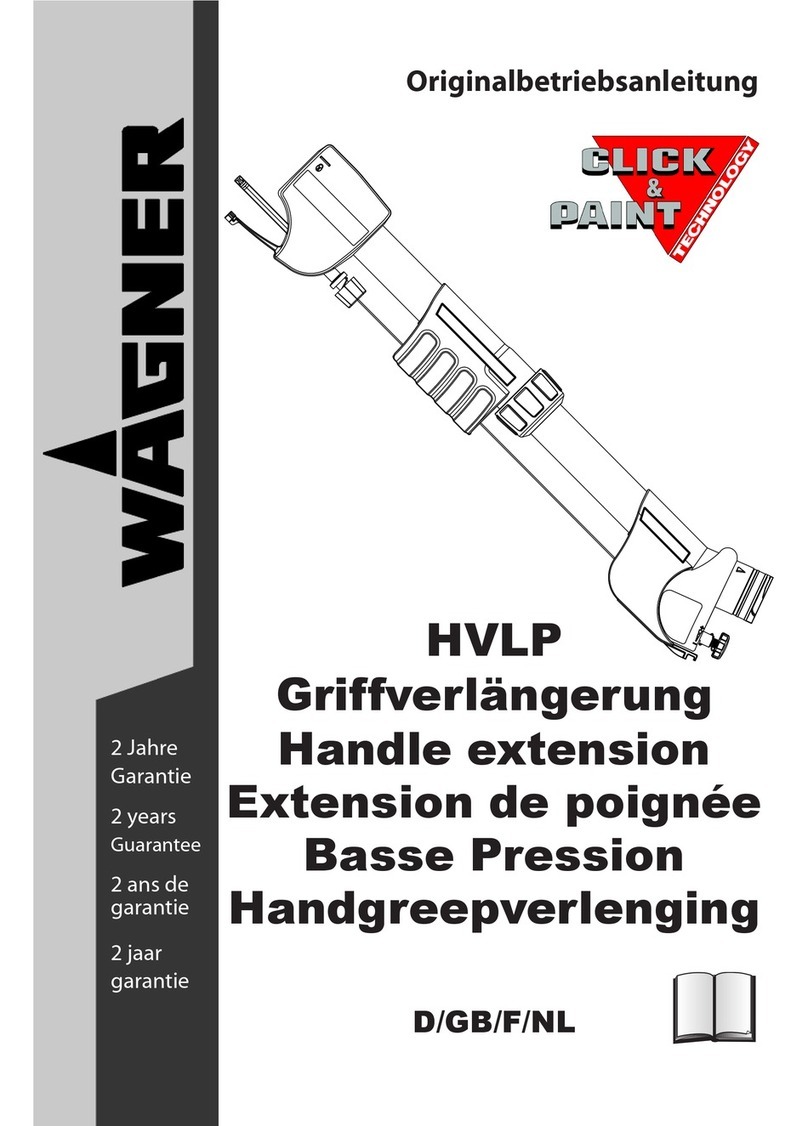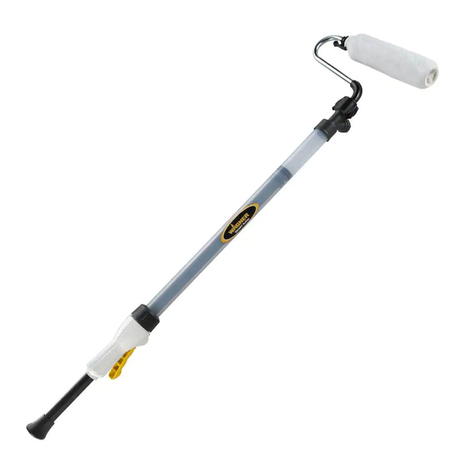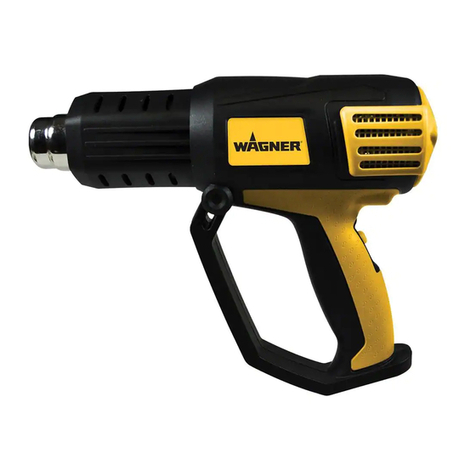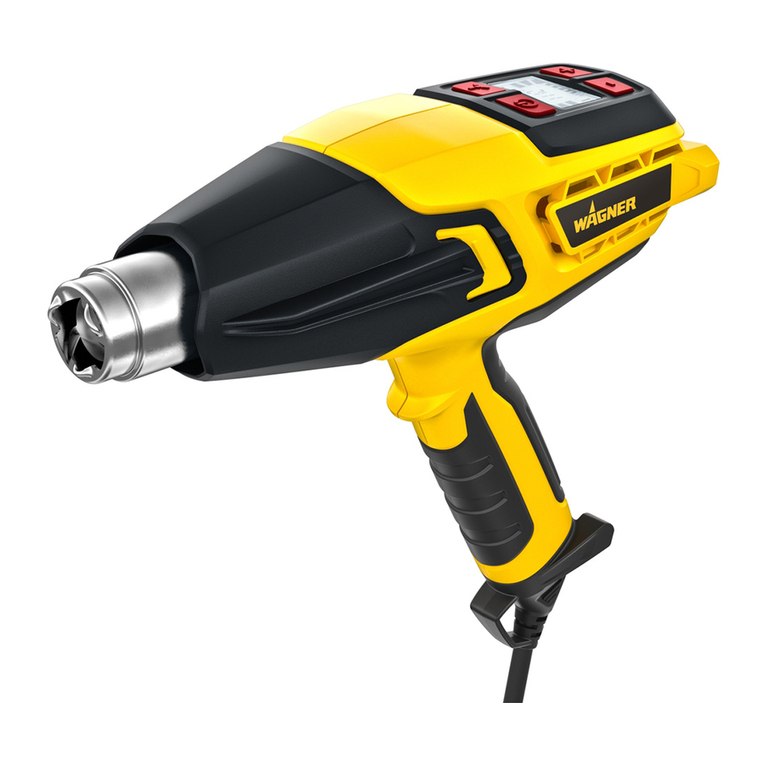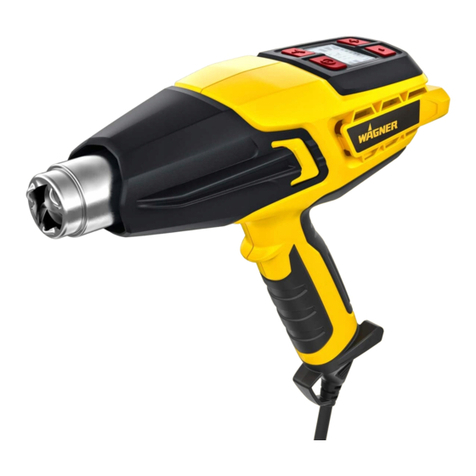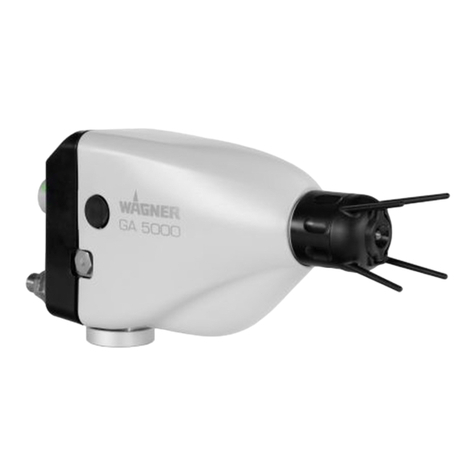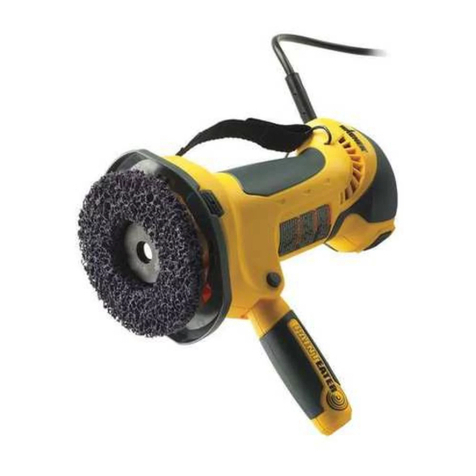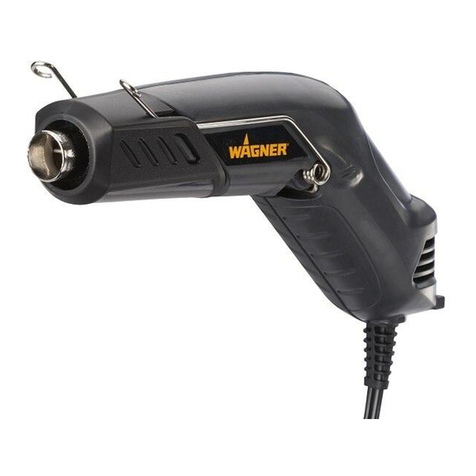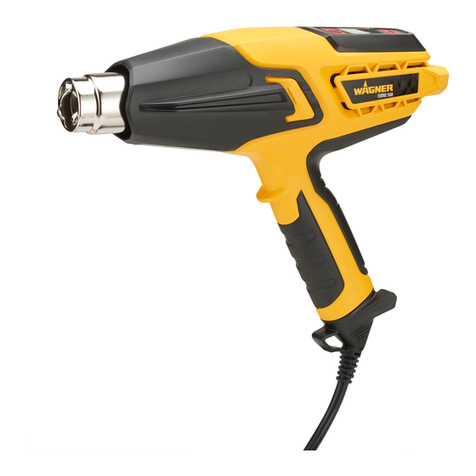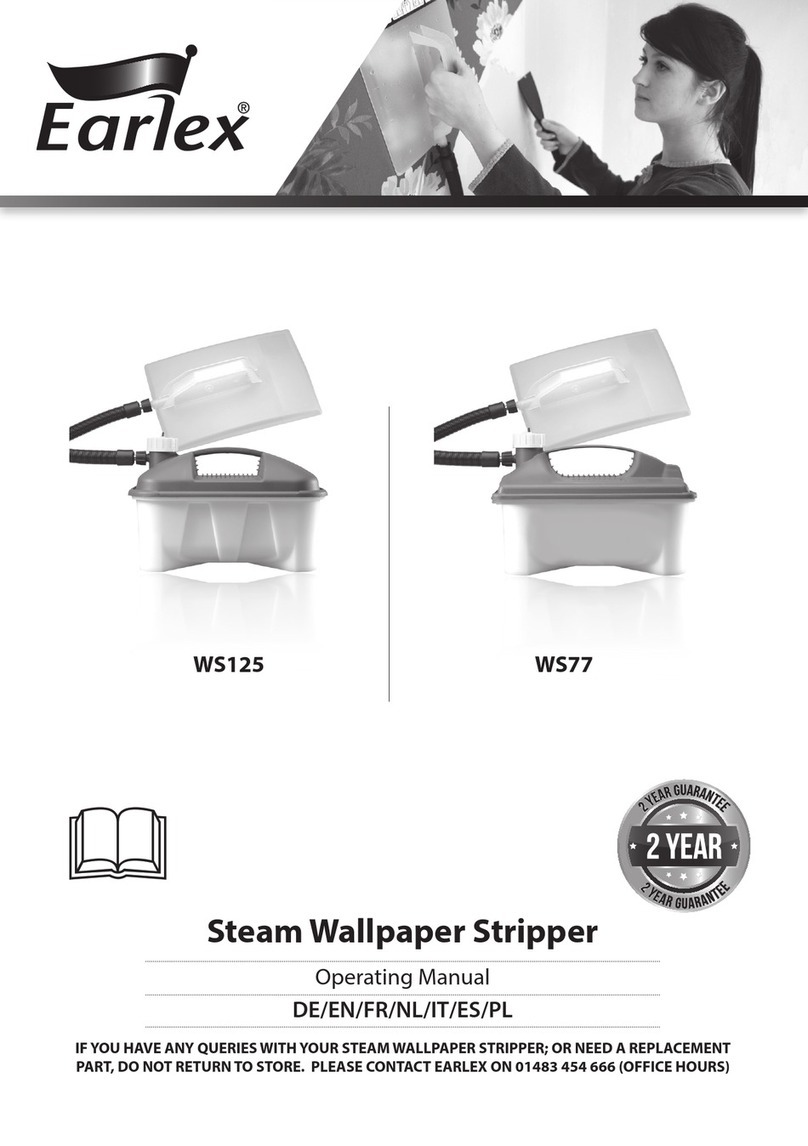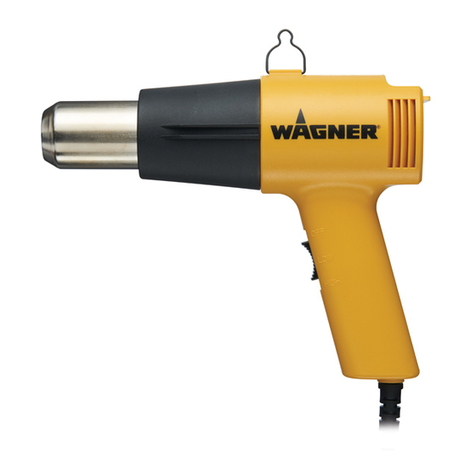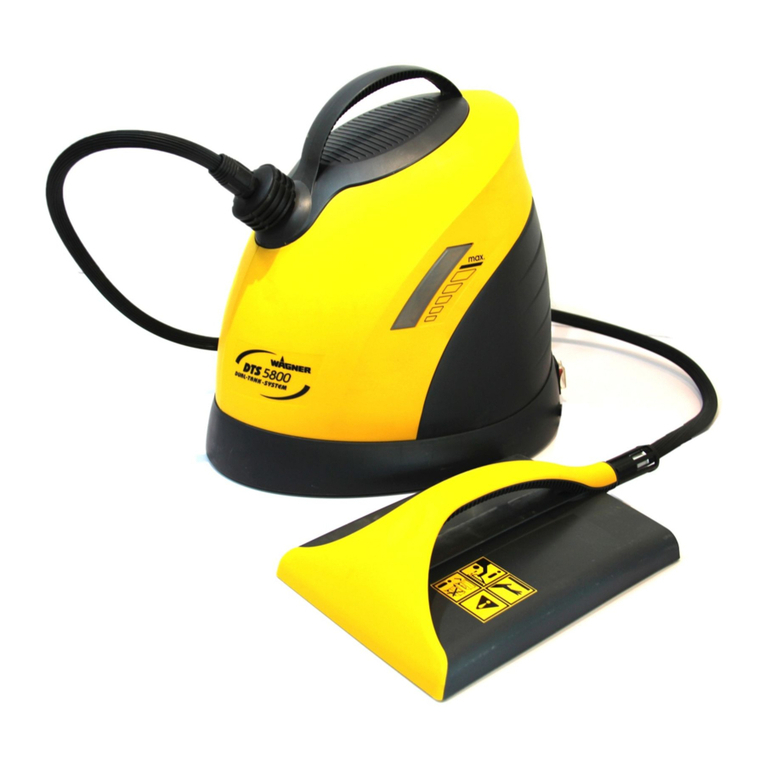
1. Preface
Dear customer,
You have purchased a high-quality technical tool which guarantees you an efficient
work performance.
The cutting heads of our company are widely known for their high quality and long-
life cycle.We do hope that you are perfectly satisfied with our products, too.
Customer care even after purchase:
This operating manual helps you to make the first steps with the new WAGNER®pro-
duct. It helps to understand its
Function and alludes to possible hazards.
However, should you be in need of further consulting service, training or some other
advice do not hesitate to contact us.
Even if you are not happy with one of our WAGNER®products!
Our marketing staff is more than glad to help you at anytime.
This operating manual should be read, understood and paid attention to by every
person in charge.
In particularly this applies for safety- and hazard warnings which are specially indi-
cated. (See chapter 2.0 safety warnings)
Following these advices helps to avoid accidents and faults.
This manual provides all information on operation and maintenance of your WAG-
NER®Thread cutting head. The information laid down in this manual is state of the
art according to the production date of the product.
Please use only this manual when working with the thread cutting head. The Wagner
Tooling Systems Baublies GmbH reserves the right to technical amendments regar-
ding the improvement of this product. However, the Wagner Tooling Systems Bau-
blies GmbH cannot held liable for any faults, damages, failures and production loss
resulting thereof caused by disregarding of some aspects mentioned in this manual.
Due to copyright reasons we would like to point out that this operating manual is for
internal use only. Please refrain from distributing it to third parties.
In addition to the instructions mentioned before, national and international "safety
instructions and rules for accident prevention" apply when operating and maintaining
the cutting head. The operating manual, in particular, the "safety instructions" have
to be read carefully. Through observing the safety instructions and legal regulations
damage to persons, mechanical breakdown and damage to the cutting head should
be avoided.
Warranty
We warrant perfect function of the thread cutting heads when purchasing and using
original WAGNER®spare parts and equipment.
We cannot hold liable for any damage to persons, mechanical breakdown and da-
mage to the thread cutting head ZR 26-I in the event of:
• Improper installation and operation
• Usage of non original spare parts
• Removal of component parts and screws
• Unauthorised modifications of our products
• Usage of damaged cutting heads.
Please note:
Read this operating manual
carefully before initial ope-
ration and take note of the
hazard warnings!
Operating Manual ZR 26-I 3
Preface
